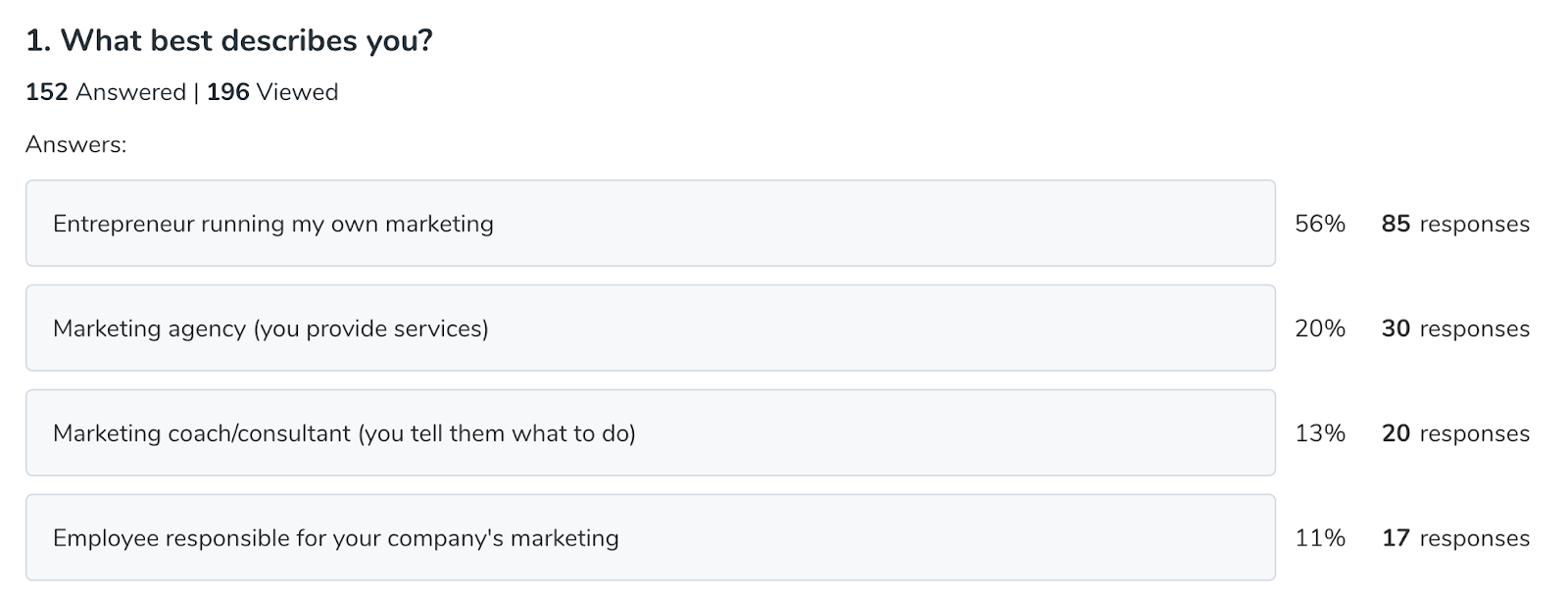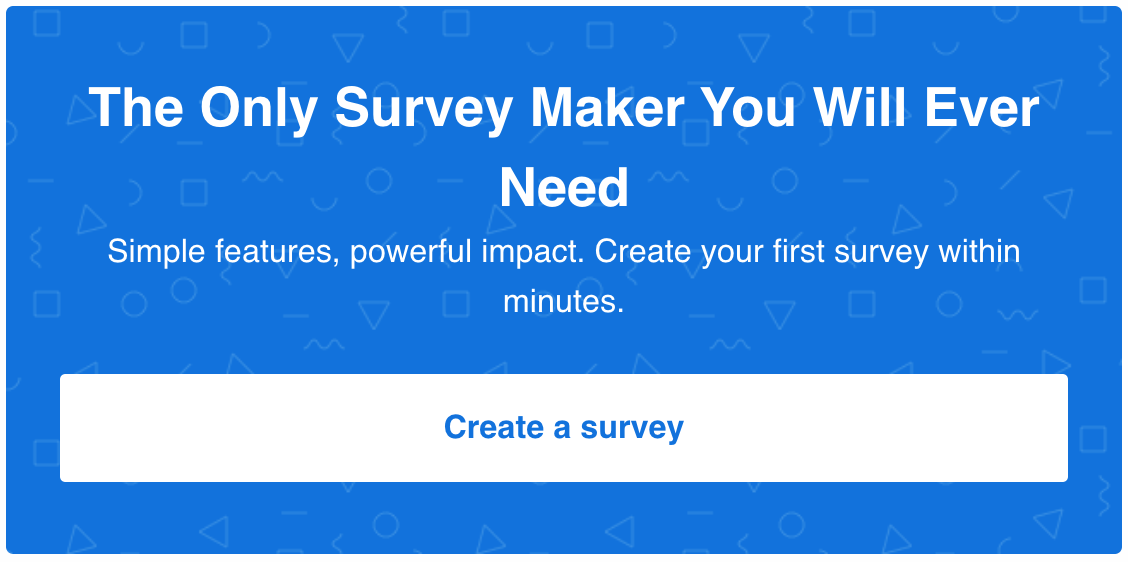The three main goals of research are prediction, description, and explanation.
While making accurate predictions or explaining the causes and effects of different events demand a lot of insight and scientific work, describing situations should be a pretty straightforward process, shouldn’t it?
Yes, but only if you’re employing the right descriptive research methods and techniques.
What is descriptive research?
Just like the name suggests, descriptive research is a research method used to describe the phenomenon that’s being studied. The main focus of this type of research is on the “what” rather than the “why”. In other terms, it only describes the research topic without explaining why it’s like that.

Rather than exploratory, descriptive research is conclusive in nature. Researchers use this methodology to obtain easily quantifiable information used to infer different stats and numbers related to the population studied.
This ease of data aggregation and analysis comes at a cost, though. Descriptive research doesn’t leave much room for creativity and diversity when it comes to the quality of answers received. That’s due to the fact that this research method comes in the form of closed-ended questions (as opposed to open-ended questions, which leave room for more unique and detailed answers).
Moreover, descriptive research is the principle behind the majority of online surveys. Businesses often use it to measure the opinions, attitudes, and satisfaction of their (potential) customers – NPS being one of the most common descriptive research survey forms. Another common use of descriptive research is in finding out the demographic characteristics of a particular population.
Information obtained through descriptive research can be used for advanced data analysis that enables marketers and business owners to draw conclusions, segment audiences, measure trends, and more.
Whatever the goal of descriptive research efforts, there are three main types of it.
3 main descriptive research methods
1. Observational method
Being that it allows the researchers to obtain both quantitative and qualitative data, this is one of the most obvious and most effective forms of descriptive research.
Quantitative observation focuses on the collection of data in the form of numbers and values. Qualitative observation, on the other hand, puts emphasis on monitoring characteristics. While the results of the former are expressed and analyzed through statistical and numerical methods, the latter allows the researcher to observe a phenomenon in a usual environment to gather natural and more descriptive results.

An example of quantitative observation could be the Net Promoter Score that shows how likely customers are to recommend your products or services. Qualitative observation happens, for instance, when the researcher decides to monitor customers’ selection and purchasing behavior in a supermarket so as to gain a deeper insight into their purchasing habits.
2. Case study method
Another type of descriptive research are case studies. They entail an in-depth study of projects, individuals, or organizations. However, as they often focus on isolated or unique cases, case studies might not be the most reliable of descriptive research methods.
This is for two reasons – (1) there’s often bias on the researcher’s part and (2) it sometimes involves an atypical study subject or respondent. Because of that, researchers generally avoid using case studies to determine the cause and effect of certain phenomena and make predictions and general assumptions.
In the world of marketing – as opposed to scientific research – case studies often have the purpose of serving as social proof or showcasing a company’s expertise and previous work experience.

3. Survey method
The survey method of descriptive research presupposes having your respondents answer a number of questions through surveys or questionnaires. Surveys are commonly used in both scientific and market research. Marketers and entrepreneurs often use surveys to perform market research or collect feedback from customers and leads.
A top-quality survey should present the right mix of closed-ended and open-ended questions. Overall, there are 8 types of survey questions that can help you when conductive descriptive research.
Online or offline? Paper or paperless? Even though this probably shouldn’t be a dilemma in 2020, I still need to point out the versatility, ease of distribution, collection, and analysis, and social awareness as the main reasons to choose online surveys as a method of conducting descriptive research.
Finally, online survey maker (such as LeadQuizzes) offer a great number of survey templatesthat you can use right away!
But when exactly should you opt for one of the descriptive research methods listed above?
When to conduct descriptive research
There are numerous different ways companies and organizations use descriptive research to achieve business goals. Here are some of the main ones:
Define characteristics of your target audience
Whether we are talking about basic demographic information – such as your respondents’ age and gender – or more detailed characteristics like their purchase behavior, lifestyle habits, and more – descriptive research can help you really pinpoint the main characteristics of your target audience and get a clearer image of who your ideal customer is.
Such information can then be used to improve decision-making and achieve different business goals. Let’s say a brick-and-mortar shop does research, and they find out that most of their customers do an online search for particular items before coming to the store. This should give them enough insight about which direction to take with their subsequent marketing efforts.
For example, in research of our own, we were looking to learn more about who the users of LeadQuizzes actually are. So, we asked the following question:

And in the screenshot below, you can see the survey data analysis breakdown for each individual response:

Knowing this helped us better understand our core customer base and geared us towards the right direction in terms of further app development and marketing efforts.
Discovering trends in your research data
Merely collecting data is unlikely to help your business in any significant way, right? In order for descriptive research to actually make sense, you need to transform the data obtained into numbers and stats that can help you analyze different trends and changes in customer behavior.
Let’s say you’re surveying the satisfaction of users with your new application. You could simply ask them to rate your app on a scale of 1-5. Of course, simply getting the average rating doesn’t mean much if you don’t define what a satisfactory rating would be for your business. In addition, you can keep track of these ratings and compare the scores month-over-month to see if there’s any improvement.
In addition, you should also consider doing descriptive research if you’re looking to answer any of the following research questions and issues:
- Observing customer habits
- Evaluating employee satisfaction
- Understanding user preferences
- Obtaining feedback
Conclusion
If the goals of your research meet any of the categories listed above, then you should consider conducting descriptive research. Of course, as already mentioned, merely collecting descriptive data won’t be of much help to your business – once you’ve managed to gather it, you need to make sure you properly analyze your survey data. And of course, mere analysis won’t do much good either if you don’t act on the findings and implement changes accordingly!
